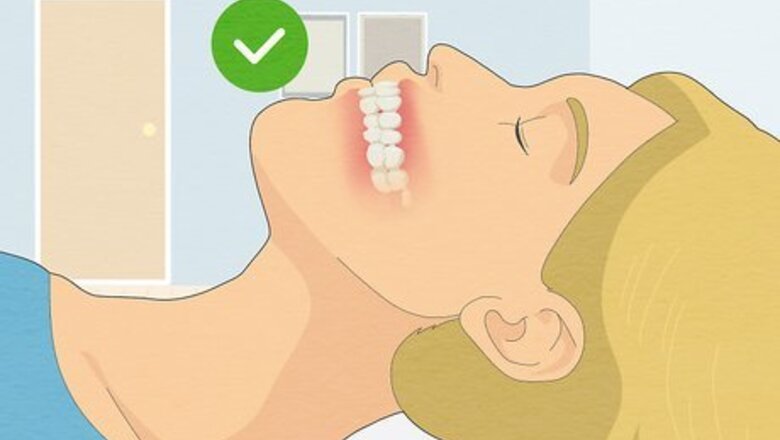
views
- Get clear aligners or wear removable retainers that straighten your teeth over time.
- Try lingual braces to have invisible braces installed on the back of your teeth so you can’t see them.
- Get a palatal expander to widen your upper and lower jaw.
- Consider composite bonding to remold and reshape any crooked or discolored teeth.
Preventing Crooked Teeth
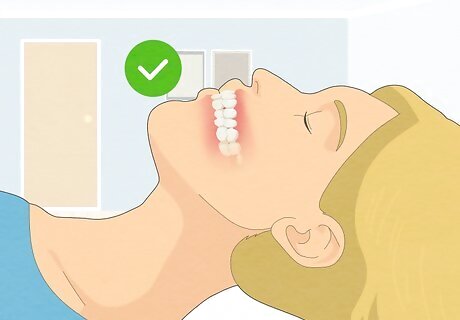
Sleep on your back. Crowding is caused by gentle, regular inward pressure by the lips and outward pressure by the tongue. One of the most common causes of this is sleeping on your stomach, which also places a lot of weight on your face. This pressure can get worse if you put your arm or something firm under your head while sleeping on your stomach and face. Try to sleep on your back or side in order to stop your teeth from moving.
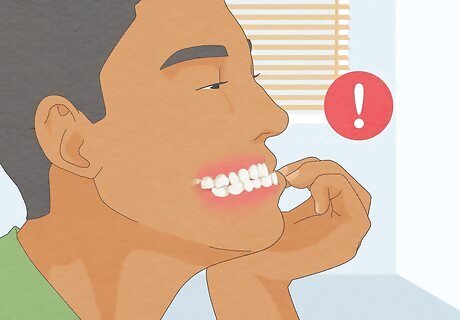
Avoid leaning your face on your hand throughout the day. So many of us slump forward and rest our head in our hands when working or studying. When you slump forward at your desk and rest your face in your hand, this causes a lot of persistent pressure on one side of the jaw. This pressure can slowly push the teeth inward, resulting in crooked teeth on one side of your face. To help avoid this, maintain good posture by making sure you are sitting flat on your bottom instead of rolled back towards the lower spine. Aligning your lower body will help position your upper body better to avoid neck fatigue.
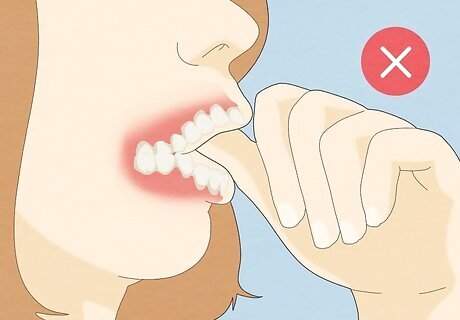
Stop thumb-sucking and other oral fixations. You can cause crooked teeth by putting outward pressure on the mouth. This is most common in children who suck their thumbs excessively; however, many teens and adults are also guilty of habits that cause outward pressure. Using straws, chewing on pens, and blowing bubbles with gum all use a similar pressure to thumb sucking and can cause outwardly crooked teeth. Try to break any habits that put outward pressure on the teeth. If you can’t stop using straws, be sure to position the straw toward the back of your mouth and not resting against your teeth.
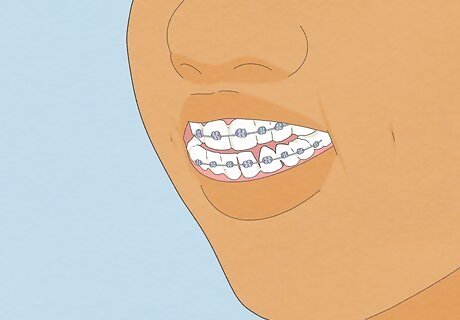
Close the gap between missing teeth with orthodontia. While it is normal for baby teeth to fall out and make way for permanent teeth, losing permanent teeth as an adult can cause issues, including crooked teeth. Adults may lose teeth due to extractions, dental problems, injury, or permanent teeth never descending after the baby teeth fall out. The gap that is left from the missing tooth puts more pressure on the existing teeth. Close the gap with braces, dental bridges, dental implants, or partial dentures to prevent crooked teeth. Movement of teeth into existing gaps is also the result of a natural process called "mesialization," which means that teeth have the tendency to come forward.
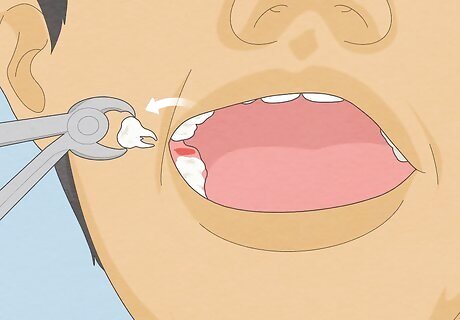
Have your wisdom teeth removed when the time comes. When your wisdom teeth come in, they tend to crowd the other teeth inside your mouth, which can make them crooked. Talk to your dentist or orthodontist when your wisdom teeth come in to see if you should get them removed before they impact the rest of your teeth. Wisdom teeth can cause other issues, like infections and difficulty chewing. Always visit your dentist regularly and get x-rays to keep an eye on your wisdom teeth as they come in.
Finding an Orthodontist
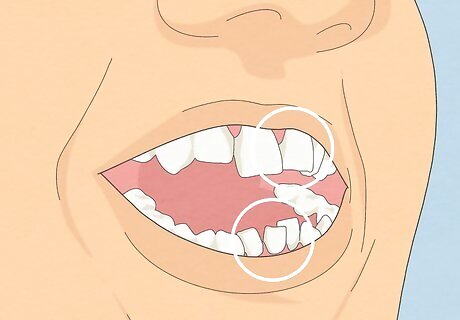
Figure out what you don’t like about your teeth. It is important to pinpoint what you would like to change about the appearance of your teeth first so that you articulate your goals to an orthodontist. Some treatment options can only address certain dental issues, so having a clear picture of what you want your teeth to look like afterward is key. For instance, maybe you want to address your overbite or you want to target your crooked front teeth.

Research board-certified orthodontists in your area. Dentists and orthodontists are different: in addition to dentistry, orthodontists are also training in the complex development of teeth and facial form. It is important to meet with an orthodontist to determine a treatment plan, not a dentist. It is also important that they are board-certified because it ensures that they are licensed with the highest level of comprehensive treatment and training. Search the American Board of Orthodontists to find a board certified orthodontist in your area. If you aren’t sure where to find an orthodontist in your area, ask your dentist for a referral. In complex cases, an orthodontist may require the help of an oral surgeon or maxillofacial surgeon in order to establish a full treatment plan.

Make an appointment with an orthodontist to discuss treatments. You may have done some research on your own, but the only person who can tell you exactly what your options are when it comes to dental appliances is your orthodontist. Sometimes braces are the only option for your dental needs. If they’re not, discussing the other treatments with them and listening to their advice is essential. Some helpful questions to ask include: “What is involved in the proposed treatment plan, and what are some consequences if I choose to not move forward with one of these options now?” “How do you determine the cost of treatment, and what billing options are available? Also, what insurance plans do you accept?” “What kind of post-treatment follow up is expected for this treatment option?” “Can you provide patient references or any before-and-after pictures of your work?”

Get a second opinion. Try to get 2 to 3 opinions before moving forward with a treatment plan, especially if it’s recommended that you get teeth extracted or if your case is a complicated one. Many orthodontists push braces even when there are other available options, but experts agree that there is usually no “one right way.” Meeting with a few orthodontists will help you find one you are comfortable with and can afford. Many orthodontists will do a complimentary consultation that you don’t have to pay for.
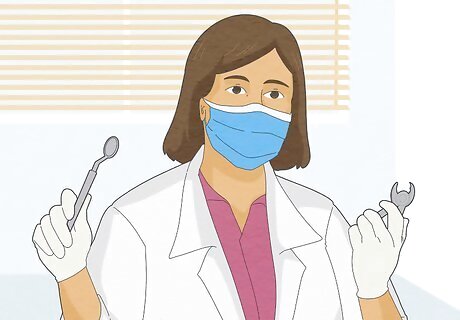
Decide on an orthodontist and have initial procedures done. Once you have chosen an orthodontist you trust, a post-consultation appointment will be scheduled. During this appointment the orthodontist will take a mold of your mouth, and you will also have panoramic x-rays taken of your face and jawline. Using the mold and x-rays, the orthodontist will be able to determine exactly what needs to be done to fix your smile and can explain the details of various treatment options. Using this information, you can then consider your options and choose the best treatment for you.
Choosing the Best Treatment Option
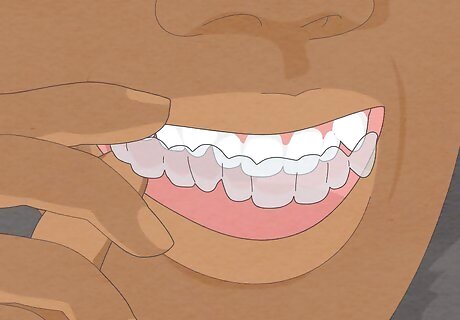
Consider a clear aligner. Clear aligners are a series of tight-fitting, custom-made retainers that slip over the teeth and slowly realign them. Because children’s mouths are still growing and developing, clear aligners are best for teens or adults whose mouths are no longer shifting. This treatment option is also typically used for patients with issues like mild to moderate crowding or spacing issues, and not for the treatment of severe underbites, overbites, or more complex problems. Treatment with clear aligners typically takes 6 – 24 months, and costs $5,000 – $8,000 depending on the length of treatment. Some other considerations include: Clear aligners require patients to be extremely compliant with wearing them. Not wearing them enough will result in a longer treatment period. There are many different brands of clear aligners, such as Invisalign, Direct Smile Club, and Candid. Some require an orthodontist's opinion to order, while others do not.
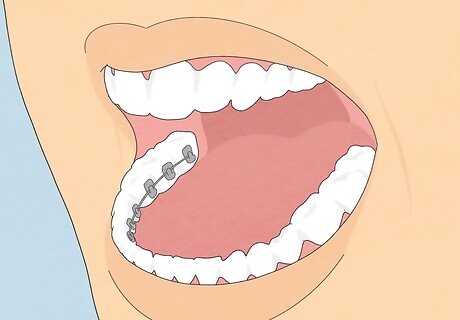
Ask about lingual braces. Lingual braces are similar to traditional braces, except that they are placed on the back of the teeth. They use the same system of wires to gradually tighten and straighten the teeth, and are typically worn for anywhere from 6 to 24 months, depending on the complexity of treatment. This treatment option is best for people ages 10 and up who have moderate to extreme spacing issues. Like clear aligners, it is a great option for people who want a discreet option, because lingual braces are hard to see. They are much more expensive than traditional braces though, costing about $6,000 – $13,000 depending on the complexity and length of treatment. Also keep in mind: One reason they are so expensive is because the material used is gold, which adapts perfectly to the inner shape of your teeth. They can initially be rather uncomfortable and it will take some time to adjust to them. Many people experience irritation from contact between the brackets and the tongue.
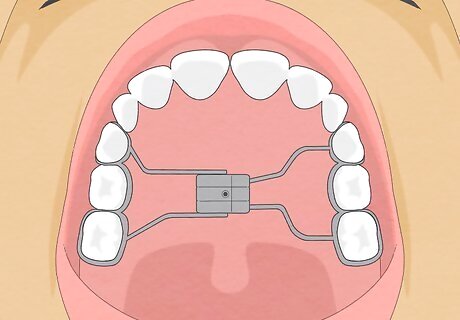
Try a palatal expander. Also known as a rapid maxillary expansion appliance or an orthodontic expander, palatal expanders are used to widen the upper jaw so that the upper and lower teeth fit together better. It consists of a screw attached to the teeth with bands, and when you turn the screw with a key the upper jaw is widened. This widening helps with overcrowding by creating space for the teeth to move naturally into their correct positions. It works best in children and teenagers younger than 15 years old because the bones of the upper jaw are still pliable. Palatal expanders tend to cost around $1,000 – $3,000, depending on the length of treatment. Keep in mind: Once the expansion is complete, the expander remains in the mouth for about 3 months to stabilize the teeth and palate (which has a weakened bone structure after expansion) before being removed. Palatal expanders require frequent visits to the orthodontist, who uses a special key to expand the palate in increments. Palatal expansion can be very painful at times and can sometimes cause nonpermanent speech impediments and mouth irritation.
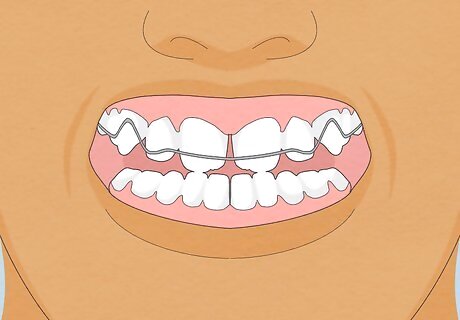
Choose a retainer. Retainers can be fixed or removable, and they are made for the upper or lower arches of the mouth to brace and straighten teeth. Typically, retainers are used to maintain the position of your teeth after treatment with braces or clear aligners; however, retainers are also used sometimes to correct minor misalignments for patients of all ages. Retainers typically cost $500 – $2,500 depending on the complexity and length of treatment. Fixed retainers are adhered to the back of the teeth so they are discreet. Removable retainers are easy to clean in order to maintain oral hygiene.
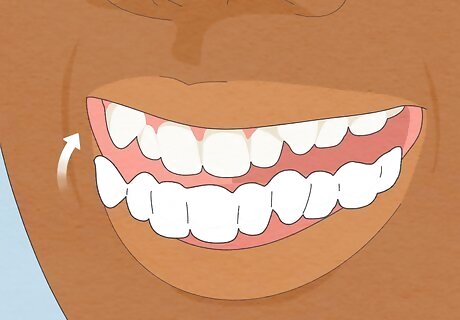
Opt for dental veneers. Also known as porcelain veneers or lumineers, dental veneers are porcelain caps that are placed on top of your existing teeth. They are ideal for patients who have gaps between teeth, fractured teeth, crowded teeth, or discoloration. The orthodontist removes a thin layer of tooth enamel, and then affixes specially selected veneers to your teeth using light-sensitive resin. The procedure can usually be done in one sitting, so the results are immediate. Veneers are very expensive, typically costing about $500 – $1,300 per tooth. This option is rarely done for anyone other than adults, as the shape of the face often determines the appropriate veneer size, and children and teens are still growing.
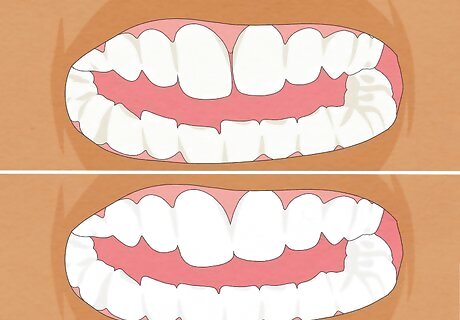
Learn about dental contouring. Also known as tooth reshaping, dental contouring is done by sanding away areas of tooth enamel or using tooth-colored resin to fix the shape of teeth. This is typically only for adult-age patients, as this option is a permanent contouring of teeth, which might not be appropriate for growing teens and children. Since this is considered a fine filing, dental contouring is only used to shorten teeth or to correct slightly crooked, chipped, or cracked teeth. Dental contouring is done in one procedure and typically costs about $50 – $500 per tooth, depending on the amount of work needed. Also keep in mind that contouring with composite resin is not as long lasting and may require re-contouring.
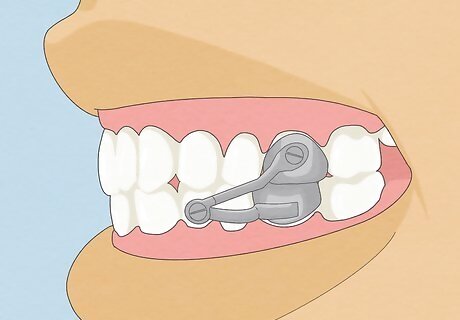
Check out the Herbst appliance. This device helps in straightening teeth by correcting your jaw imperfections. The appliance has a metal extension which is attached to the molars to develop the lower jaw in a forward direction which helps in correcting the bite. This allows the lower and upper jaw to meet which is needed to straighten your teeth. You have to wear this appliance for one year to allow the lower jaw to shift into the correct position.
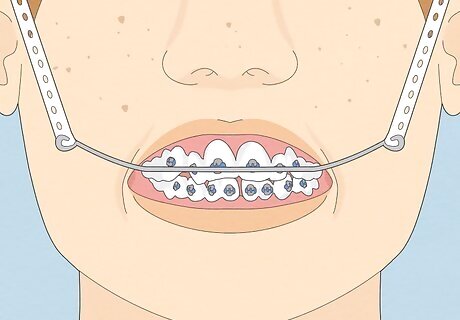
Choose a headgear. Headgear is an option that is mostly reserved for young children with severely crooked teeth. Headgear fits around your mouth and straps onto your forehead and your chin, placing pressure on the upper teeth and jaw. This helps move the jaw and teeth into the right position over time. Typically, you have to wear headgear for a certain amount of hours every day in order to see results. However, you have to remove it while eating.
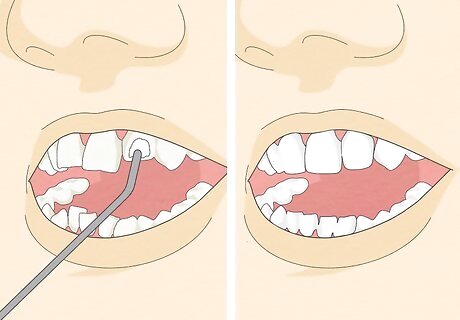
Consider composite bonding. In this treatment, a tooth-colored resin material is used that is shaped and applied to your teeth using adhesives. It gives the appearance of straighter, whiter teeth. This treatment is meant for minor or temporary correction of teeth defects. It is also prone to staining.
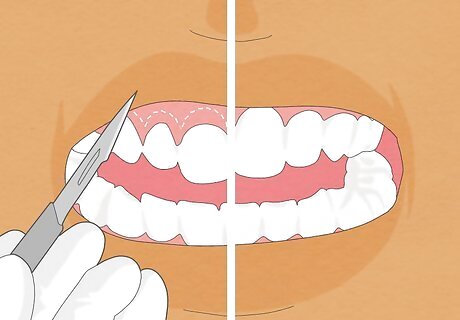
Go for gum lifting. This treatment can drastically improve your smile. It raises and sculpts your gum line to showcase your teeth. If you do not have enough teeth, too much bare gum or asymmetry in the gum line, consider gum lifting. The cost can range from $300 to $600 per tooth for a simple procedure.


















Comments
0 comment